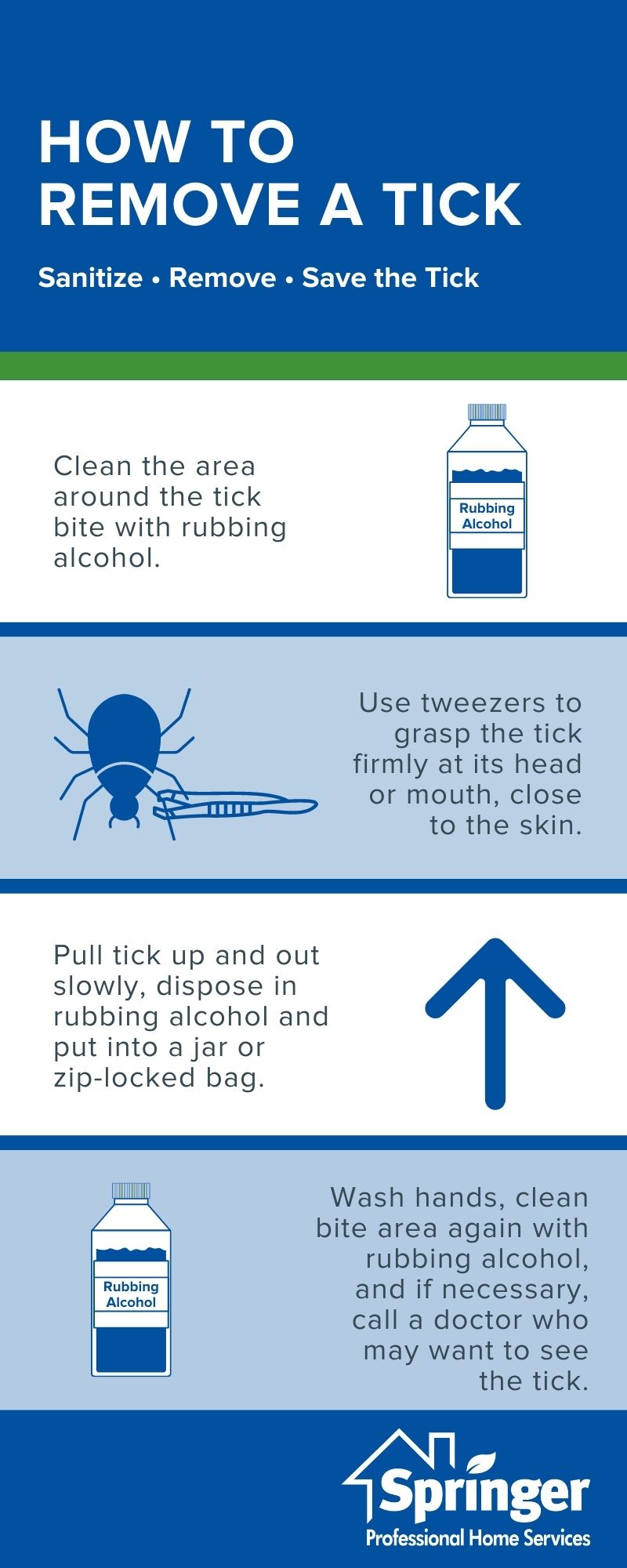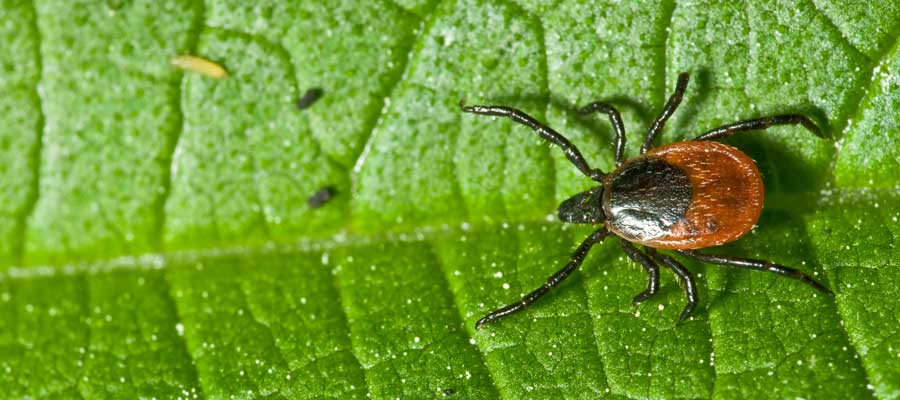With summer in the near future, it’s time to start taking preventative measures against ticks. These pests come out in the late spring and summer, looking for animals to provide them with a blood meal. Not only do they stealthily bite us and our pets, they are also capable of causing dangerous diseases such as Tularemia, Rocky Mountain spotted fever, and of course, the infamous Lyme disease. You can make sure that you’re prepared to deal with ticks by learning about what species live near you and what you can do if you’ve been bitten.
Identifying Different Ticks in Central Iowa
There are three prominent tick species living in Central Iowa. Here are some qualities to look out for that will help you differentiate between them:
- Lone star tick: With especially long mouthparts and a white spot on their back, the lone star tick is easily identifiable. Look out for them in wooded areas where small animals are active.
- American dog tick: These ticks are built very similarly to the lone star tick, but are composed of a reddish-brown color and have less pronounced mouthparts. American dog ticks are commonly found latched onto dogs, hence the name.
- Deer tick: The deer tick is smaller and darker in color than the previous two ticks. It is widely feared for its ability to spread the bacteria that causes Lyme disease.
Although only the deer tick can cause Lyme disease, each one of these tick species is capable of carrying diseases. If you find one on your skin, try to remove it as soon as possible.
Have a pest problem? We can help!
 How to Remove a Tick Safely
How to Remove a Tick Safely
When you discover that you’ve been bitten by a tick, try to remove the tick from your skin as soon as you can. The CDC recommends taking the following course of action to safely remove a tick:
- Using a pair of fine tweezers, grab the tick as close to the surface of the skin as you can.
- Steadily pull the tick up and out of the skin. If you turn the tweezers while pulling, the tick’s mouthparts might stay lodged in your skin. Use the tweezers to take them out if this happens.
- Once you’ve removed the tick, clean the bitten area with soap and warm water or rubbing alcohol.
- Dispose of the tick by flushing it, placing it in a sealed trash can, or placing it in alcohol. Do not crush it with your bare hands.
Taking these steps as soon as you notice that you’ve been bitten by a tick will improve your chances of avoiding a disease. If you start to experience rashes or fevers within 2-3 weeks following a tick bite, consult a medical professional.
Tick Extermination Services in Central Iowa
If you’re ready to get a head start on tick season this year, ask your local pest control company about how they can help. The tick experts at Springer Professional Home Services can teach you all about what kinds of ticks might be in your area and what you can do to steer clear of them. For a free tick extermination quote, contact us today!

